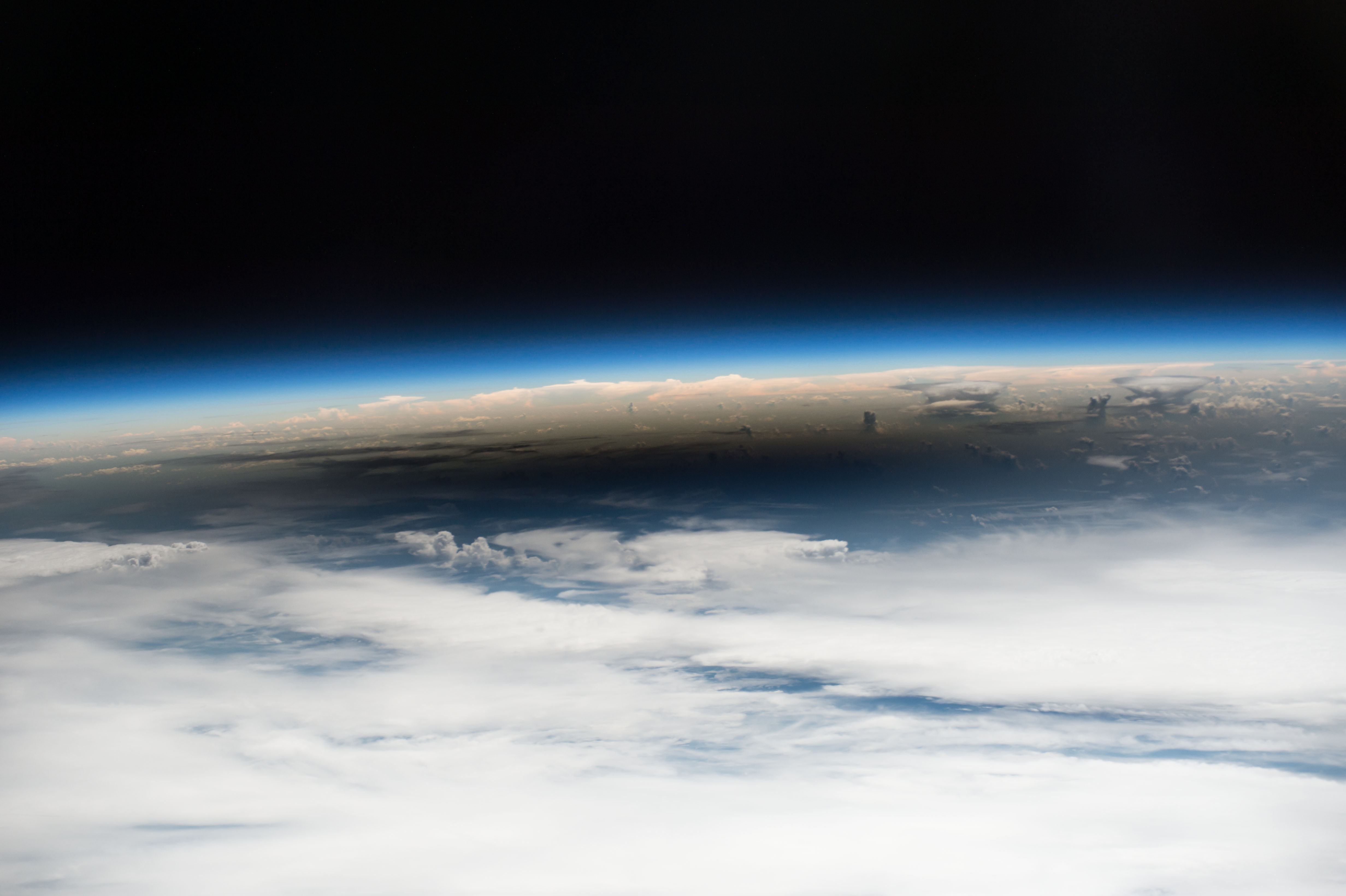 [time-brightcove not-tgx=”true”]
[time-brightcove not-tgx=”true”]
Few people get a better view of the Earth than those who are actually off the Earth—astronauts who can look down on our planet from above. They are the lucky handful who get to experience the so-called overview effect—the transcendent sense of seeing the world as the fragile biosphere it is, set against the blackness of space. But when it comes to witnessing a solar eclipse, the astronauts don’t have it so good, with a phenomenon that is flat-out eye popping when witnessed from the surface of our world, appearing dark, unsettling, and even a little ugly from space.
A total solar eclipse occurs when the moon passes in front of the sun, blocking out most of its light. It’s as striking as it is thanks to a bit of cosmic serendipity: the sun is about 400 times bigger than the moon, but it’s also about 400 times farther away, meaning that the two disks appear to be about the same size when we see them in our skies. During an eclipse, that makes for a perfect fit, with the moon obscuring the entire body of the sun, while allowing the solar fires to flare out on all sides.
Read More: These Are All the Different Types of Eclipses
Magnificent as that juxtaposition seems, it’s really nothing more dramatic than the moon casting a localized shadow on Earth. As the moon orbits the Earth, and the Earth spins on its axis, that shadow moves across the surface of the planet at about 1,600 km/h (1,000 mph). So what would you see if you were looking down on it from above? A dark, moving blotch—a sort of floating bruise on the world.
“It was unlike anything I’ve ever seen,” former space station astronaut Terry Virts recently told USA Today. “I joke I’m glad they told us there was an eclipse because it would have been unsettling to look down at Earth and see this black spot moving across.”
Read More: Where You Can Watch the Solar Eclipse
On April 8, that black spot will be racing to the northeast, from western Mexico, through Texas and up toward New England and Canada’s maritime provinces, visible in its totality to more than 31 million people in the U.S. alone. They will have some of the best seats in the house for the command performance that will be playing out in the skies. Meantime, as the 10 people currently in space—seven aboard the International Space Station and three aboard China’s Tiangong space station—will learn anew, the view from the balcony often doesn’t measure up.
from TIME https://ift.tt/BW8mRhs
via IFTTT
No comments:
Post a Comment